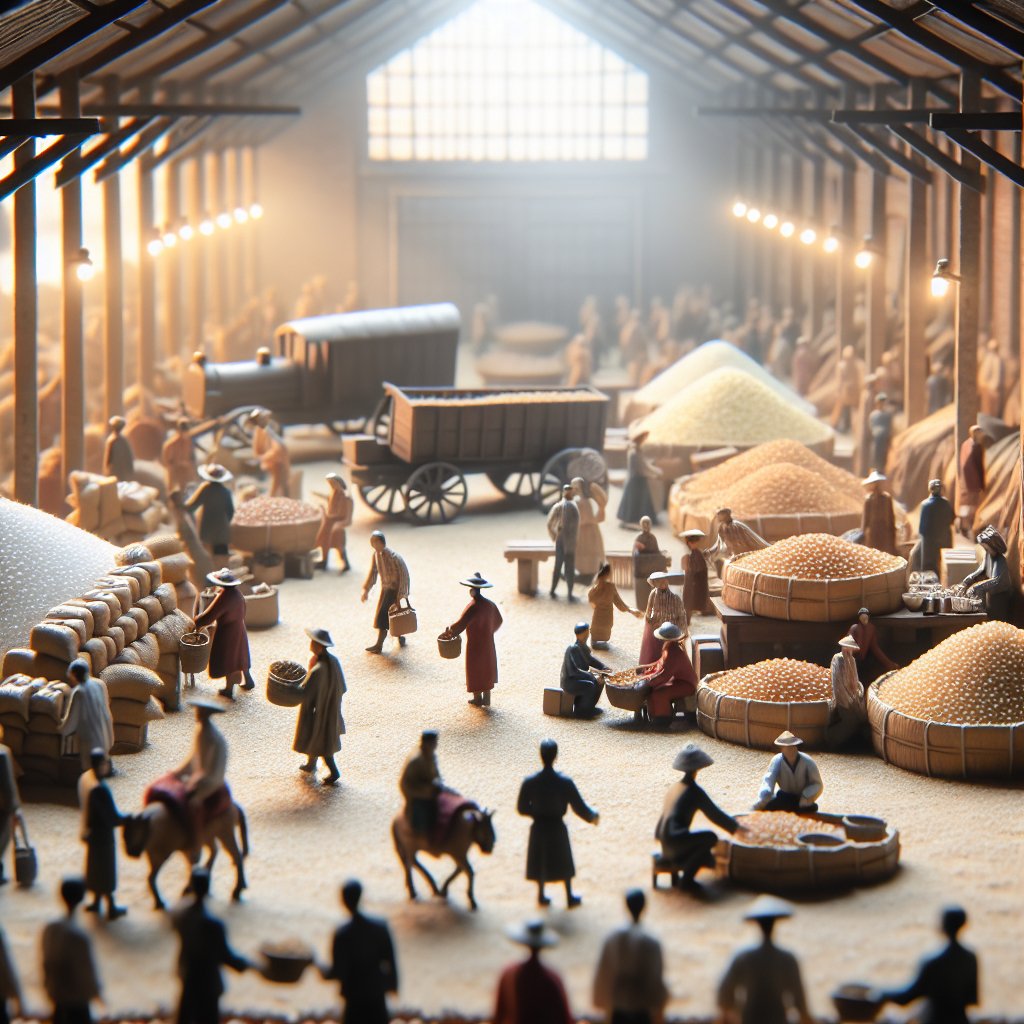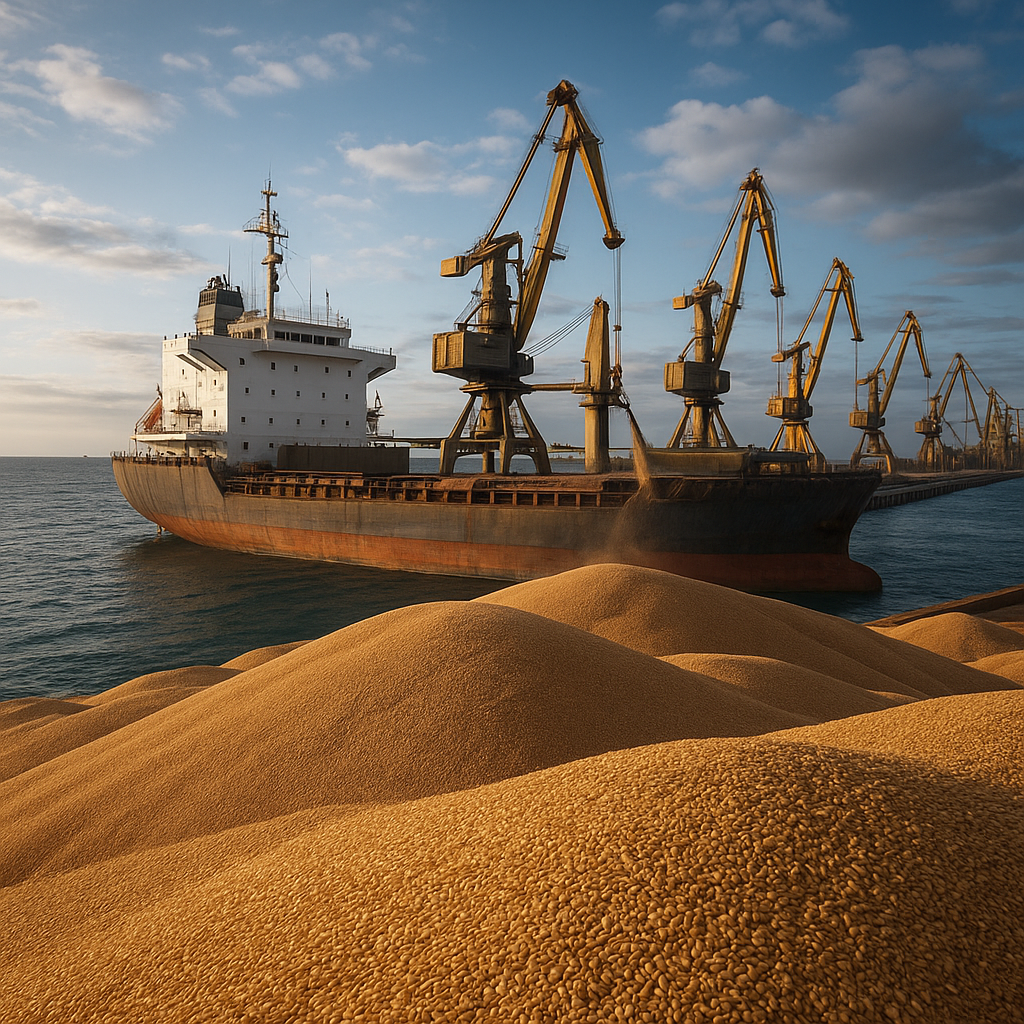The grain market has long been a vital component of the global economy, influencing food security, trade policies, and agricultural practices. Understanding historical trading patterns in the grain market can provide valuable insights into current trends and future developments. This article delves into the complexities of grain trading, examining the factors that have shaped the market over time and the implications for stakeholders today.
Historical Overview of Grain Trading
The history of grain trading dates back thousands of years, with ancient civilizations relying on grains as a staple food source. The earliest records of grain trade can be traced to Mesopotamia, where barley was a primary commodity. As societies evolved, so did the methods of trading grains, leading to the establishment of markets and trade routes that facilitated the exchange of this essential resource.
In the Middle Ages, grain trading became more organized, with the emergence of local markets and fairs. The introduction of currency further streamlined transactions, allowing for more efficient trade. By the 18th and 19th centuries, the Industrial Revolution transformed grain production and distribution, leading to increased demand and the establishment of global trade networks.
Throughout the 20th century, technological advancements, such as the development of refrigeration and transportation, revolutionized the grain market. The establishment of futures markets allowed traders to hedge against price fluctuations, providing a more stable environment for grain trading. These developments laid the groundwork for the modern grain market, which is characterized by complex supply chains and a diverse range of stakeholders.
Key Factors Influencing Grain Prices
Several factors influence grain prices, making the market highly dynamic and often unpredictable. Understanding these factors is crucial for traders, farmers, and policymakers alike. Below are some of the key elements that impact grain prices:
- Weather Conditions: Weather plays a significant role in grain production. Droughts, floods, and other extreme weather events can drastically affect crop yields, leading to fluctuations in supply and prices. For instance, a drought in a major grain-producing region can result in lower yields, driving prices up due to scarcity.
- Global Demand: The demand for grains is influenced by population growth, dietary changes, and economic development. As countries industrialize and urbanize, their demand for grains, particularly for livestock feed, increases. This growing demand can lead to higher prices, especially if supply does not keep pace.
- Government Policies: Agricultural policies, including subsidies, tariffs, and trade agreements, can significantly impact grain prices. For example, a government subsidy for corn production can lead to an oversupply, driving prices down. Conversely, tariffs on imported grains can protect domestic producers but may lead to higher prices for consumers.
- Technological Advancements: Innovations in agricultural technology, such as genetically modified organisms (GMOs) and precision farming, can enhance crop yields and reduce production costs. These advancements can lead to increased supply, which may lower prices in the long run.
- Market Speculation: Speculators play a crucial role in the grain market, buying and selling futures contracts based on their expectations of future price movements. This speculation can lead to increased volatility, as traders react to news and trends that may not directly relate to supply and demand fundamentals.
Analyzing Historical Trading Patterns
To gain insights into the current state of the grain market, it is essential to analyze historical trading patterns. By examining past price movements, traders can identify trends and potential future developments. Historical data can reveal how various factors have influenced grain prices over time, providing a framework for understanding current market dynamics.
One notable trend in the grain market is the cyclical nature of prices. Historically, grain prices have experienced periods of boom and bust, often driven by supply and demand imbalances. For example, during the early 2000s, rising global demand for biofuels led to a surge in corn prices, which peaked in 2008. However, subsequent years saw a decline in prices as production increased and demand stabilized.
Another important aspect of historical trading patterns is the correlation between different grains. For instance, wheat, corn, and soybeans often exhibit interrelated price movements due to their roles in livestock feed and food production. Analyzing these correlations can help traders make informed decisions about their investments and hedging strategies.
The Role of Technology in Modern Grain Trading
In recent years, technology has transformed the grain trading landscape, making it more efficient and accessible. The rise of digital platforms and trading algorithms has enabled traders to execute transactions quickly and analyze market data in real-time. This technological shift has democratized access to the grain market, allowing smaller players to participate alongside larger institutions.
Moreover, advancements in data analytics and artificial intelligence have enhanced the ability to predict market trends. Traders can now leverage vast amounts of historical data to identify patterns and make informed decisions. This data-driven approach has become increasingly important in a market characterized by rapid changes and uncertainties.
Future Outlook for the Grain Market
As we look to the future, several trends are likely to shape the grain market. Climate change poses a significant challenge, with shifting weather patterns potentially impacting crop yields and production. Additionally, the ongoing global population growth will continue to drive demand for grains, necessitating innovations in agricultural practices and technology.
Furthermore, geopolitical factors, such as trade tensions and conflicts, can disrupt supply chains and influence grain prices. Stakeholders in the grain market must remain vigilant and adaptable to navigate these challenges and seize opportunities as they arise.
Conclusion
Understanding the historical trading patterns of the grain market is essential for anyone involved in agriculture, trading, or policy-making. By analyzing the factors that have influenced grain prices over time, stakeholders can better anticipate future trends and make informed decisions. As the market continues to evolve, staying abreast of developments and leveraging technology will be crucial for success in this dynamic field.













